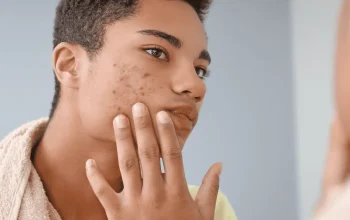Acne in adult females often presents as a chronic condition and can lead to anxiety or depression. It can persist from adolescence or appear for the first time in adulthood. Its etiology is unknown but genetic, hormonal, and diet factors play a role. Regardless of its etiology, treatment of acne in adult females often involves ongoing maintenance therapy for many years.
A high intake of white flour products, sweets, and fried foods are common triggers of acne in adult females. Stress can also cause acne breakouts and weaken the immune system. Certain medications and environmental factors can also cause acne in adult females. Some contraceptives, particularly oral contraceptives, may exacerbate acne.
Researchers in Colombia have found that the prevalence of adult female acne has increased over the past five years. This has been the case in the country for many years, but further studies are necessary to identify the risk factors that may lead to acne in adult females. The study also found that acne is more common in young women than in older adults. In Colombia, the prevalence of acne in adults is 2.14 per 1000 people. The highest rate was found among patients aged 25 to 29 years, and it decreased significantly in patients over 50 years old.
The treatment of acne in adult females should involve a multidisciplinary approach. This involves identifying the cause of acne, assessing the severity of the condition, and making appropriate management decisions. A primary care provider may treat mild-to-moderate cases, and may refer a patient to a dermatologist for severe cases. The patient’s lifestyle and mindset also need to be taken into consideration when treating acne.
Treatment options for adult female acne include topical antibiotics, retinoids, and hormonal treatments. Topical retinoids are often a good choice for maintenance therapy. Topical retinoids like adapalene have demonstrated efficacy when used alone, and azelaic acid has demonstrated a favorable safety profile.
Adult female acne has many different characteristics than acne in adolescents, and it presents multiple etiopathogenic factors. The aim of this guide is to identify best practices in treating acne in adult females and make therapeutic decisions based on evidence. In addition to providing information about treatments, it also provides recommendations for further studies to improve the diagnosis and treatment of this condition.








